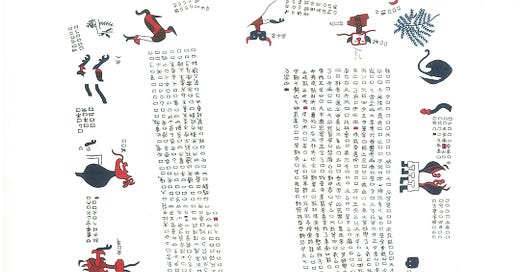Long Read: A Lost Chinese Treasure’s 60-Year Journey Home
Peking University Professor Li Ling’s meticulous quest to restore the Zidanku Silk Manuscript offers a model for global scholarly collaboration
Illustrations and text copied from the Zidanku Silk Manuscript
On May 16, a historic moment in cultural diplomacy unfolded at the Chinese Embassy in Washington, D.C. The Smithsonian’s National Museum of Asian Art formally returned two volumes of the ancient Zidanku Silk Manuscript — “Decrees of the Five Elements” and “Offense, Defense, and Divination” — to China’s National Cultural Heritage Administration. After nearly 80 years abroad, this national treasure finally headed home.
The Zidanku Silk Manuscript is the earliest Chinese silk document discovered to date and the only known silk manuscript from the Warring States period (475-221 B.C.). Its importance for understanding ancient Chinese divination, numerology, and Yin-Yang and the Five Elements — fundamental concepts in Chinese philosophy and cosmology — is unparalleled. The manuscript originally comprised three volumes. The first, “Decrees of the Four Seasons,” the most complete section detailing ancient myths related to the seasons, remains in Washington.
The returned second and third volumes will be publicly displayed for the first time in
Keep reading with a 7-day free trial
Subscribe to Caixin Global China Watch to keep reading this post and get 7 days of free access to the full post archives.





